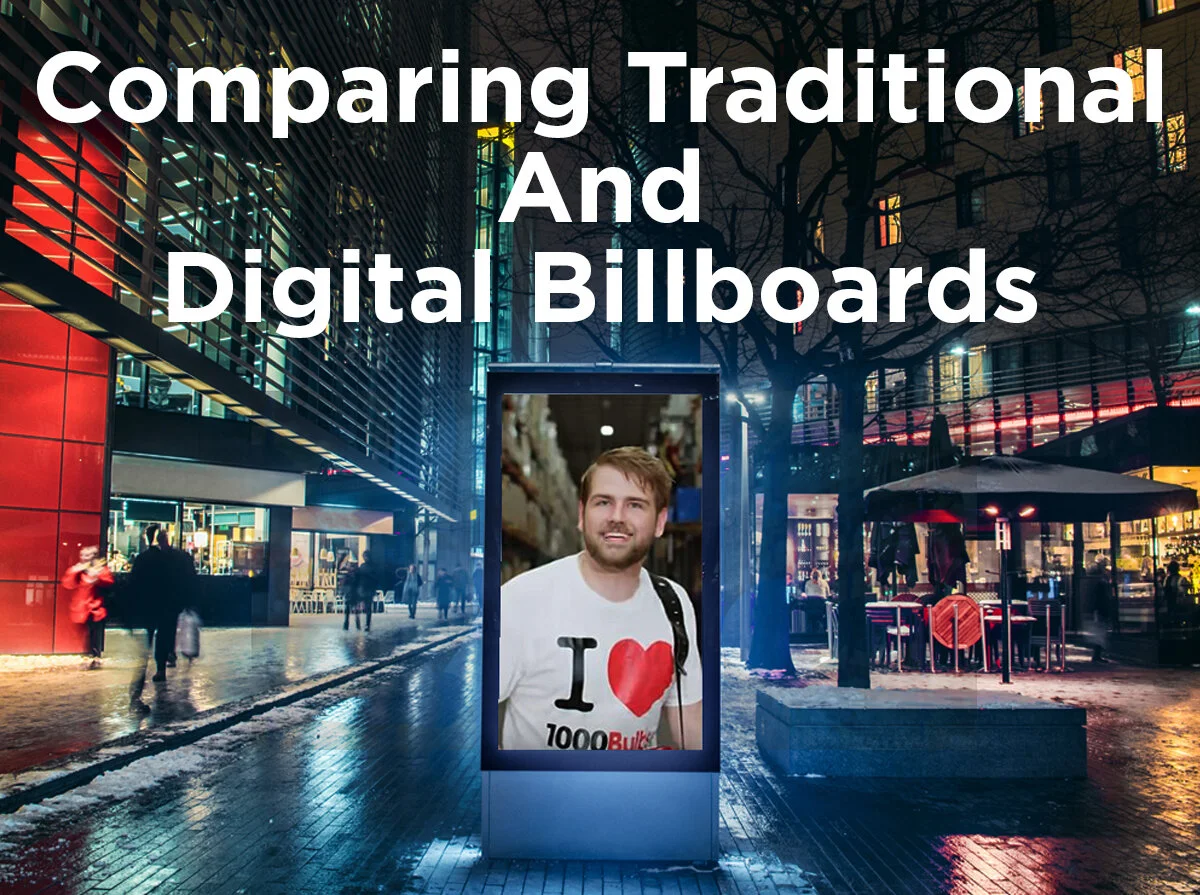Comparing Traditional and Digital Billboards
You pass them on your way to work, running errands or while riding along the freeway. Massive, colorful and clever, billboards are forms of advertisement meant to attract attention. Billboards are meant to be captivating enough to pull your eyes away from the road for a second, but not so eye catching that you swerve into another driver’s lane. Though traditional billboards are still popular, the move to digitally engineered LED billboards is seeing a steady increase.
Traditional Billboards
Traditional or print billboards have been an advertising standard for years. Traditional billboards are usually made of vinyl or paper with lights used to surround the boards so they can be seen better at night. Businesses are able to promote products to a wide audience, which is ideal for most companies. However, traditional billboards are steadily becoming a thing of the past due to maintenance and lack of variation in what may be promoted on the signage. The signs can often be troublesome to put up and intolerant of inclement weather. Maintaining these signs can be costly due to the labor required—just think about some of the frazzled signs you've seen along the road.
Though traditional billboards still have the ability to capture an audience, they don’t draw the same attention as digital billboards. A study done by the U.S. Department of Transportation Federal Highway Administration found that during visible time, drivers tend to gaze at digital signs 63 percent of the time vs the 37 percent for standard billboards on urban roads.
Digital Billboards
Digital billboards use LED arrays to display computer-automated messages and images. Because electronic billboards are controlled and operated using a computer, they are much easier to change and maintain than traditional billboards. Digital billboards offer businesses the opportunity to update and modify messages to their audience as often as possible with the use of a computer. Basic pixels in a billboard consist of red, blue and green LEDs. Using a microprocessor or logic chip, the LEDs communicate with the computer to enhance, change or color mix to adjust the sign. With this technology, a multitude of colors can be displayed, making advertisements more captivating, lively and memorable. LED billboards are also much easier to see at night, unlike traditional boards, and can run for extended periods of time. So why isn't every company jumping on the LED billboard bandwagon?
The average cost for a digital billboard can vary widely due to the size and the location. Cost may also fluctuate depending on time of year, location, product demand and extent of campaign. Many businesses find this a little too steep, considering you are sharing advertising space with several other companies, and your message may only show for 8 seconds every few minutes. Plus, print billboards can be as low as $500 a month. Traditional billboards are considered more cost effective upfront, but LED boards have actually proven to have more of an impact on audiences. An Arbitron Digital Billboard Report found that nearly one in five viewers discussed an ad they’d seen on digital billboards with other people. Viewers also found the LED billboards to be more attractive.
Whether you decide on digital or traditional, billboards are still an effective method for reaching your audience. Just remember the brighter you shine, the more they remember you. Have anything you would like to add to this article about your experience with digital billboards? Feel free to leave a comment or drop a line at Facebook, Twitter, LinkedIn, Pinterest or Instagram!







